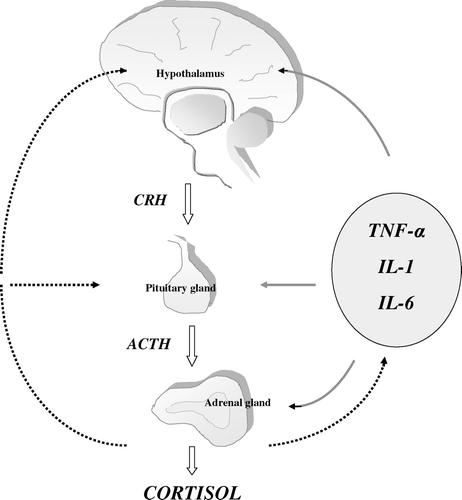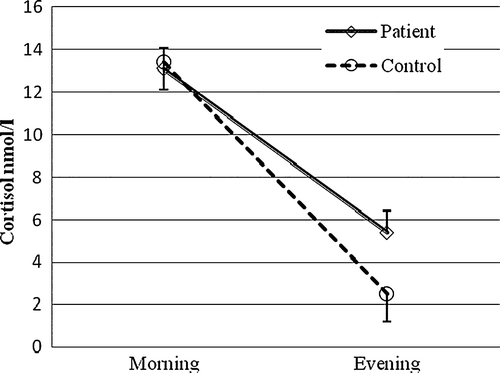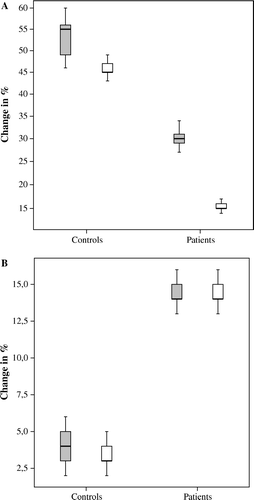Figures & data
Figure 1. Schematic diagram illustrating the bidirectional communication between the neuroendocrine and immune systems. Tumour necrosis factor (TNF)-α, interleukin (IL)-1, and IL-6 stimulate the secretion of corticotropin-releasing hormone (CRH) from hypothalamic neurons; at high concentrations or over a prolonged period they may also stimulate the secretion of adrenocorticotrophic hormone (ACTH) from the pituitary gland and cortisol from adrenal cortex. The hypothalamic-pituitary-adrenal axis activity is modulated by a negative feedback system through which the release of CRH and ACTH is suppressed by cortisol itself. Cortisol inhibits the production of all three inflammatory cytokines and also inhibits most of their effects on target tissues. The solid lines indicate stimulation, the dotted lines indicate inhibition.

Figure 2. The total daily cortisol production, as assessed by free cortisol in 24-hour urine collection, in apparently healthy individuals versus patients with coronary artery disease (CAD) Citation46, P<0.05. Box plots summarize the median, interquartile range, and minimum and maximum values.

Figure 3. The salivary cortisol levels 30 minutes after awakening (morning) and at bedtime (evening) in apparently healthy individuals versus patients with coronary artery disease (CAD) Citation46, P<0.05. Values are given as mean (SD).

Figure 4. A: Salivary cortisol response, given as percentage increase, to physical stress (grey boxes) and psychological stress (white boxes) in apparently healthy individuals versus patients with coronary artery disease (CAD), P<0.01 for both tests. B: Inflammatory response, given as percentage increase in C-reactive protein (CRP), to physical stress (grey boxes) and psychological stress (white boxes) in apparently healthy individuals versus patients with CAD, P<0.01 for both tests Citation46.
